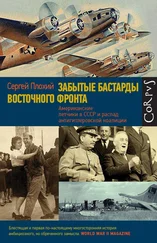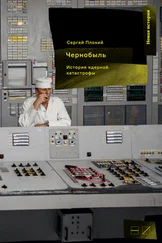But by far the most important information provided in the Chernobyl newspapers concerned the different types of potatoes available for planting. Two experts, one from a Kyiv research institute and the other from the Chernobyl center for potato seeding, explained the pros and cons of each. This subject was also important to many Prypiat residents, some of whom had dachas , or small summer houses, in the neighborhood, and planted potatoes and other vegetables there. But a much larger group, mostly young men and women from Vasyl Kyzyma’s construction crews, were also getting ready to go back to their villages to help their parents plant potatoes. Good information on the best types to plant was the best gift they could offer their parents and themselves—during the long winter months they would rely on products sent to their city apartments from their parents’ plots. 5
Best of all, the coming weekend was the beginning of a long stretch of holidays. May 1, International Workers’ Day, was a statutory holiday in the Soviet Union. Orthodox Easter, officially ignored by the authorities but widely celebrated, was coming up on Sunday, May 4. The week after that would also be a short one—May 9, marking victory in World War II, was a statutory holiday widely celebrated by the authorities and average people alike. Friday, April 25, was the last opportunity to take care of unfinished business before the holiday mood took over the entire city, making it difficult, if not impossible, to get anything done before mid-May.
Like everyone else in Prypiat, Viktor Briukhanov was looking forward to a restful weekend. He badly needed one. Ever since his return from Moscow, Briukhanov had worked nonstop, coming home only to sleep. Now he would have an opportunity to enjoy the warm weather and the outdoors. Once, when he and his wife, Valentina, were bathing in the river in early April, they had encountered two elks in the water—an unforgettable experience. Maybe they would see the elks again. But the most important thing was that their daughter, Lilia, and her husband were coming from Kyiv for a visit. 6
As always, Friday was a hectic day for Briukhanov, but there was no indication of trouble that might spoil the weekend. Radioactive leaks were still occurring, but they managed to keep them under control. At the moment, there was no need to shut down any of the reactors in order to deal with the leaks, as had happened a few weeks earlier at the Zaporizhia nuclear power plant in southern Ukraine, which had two operational units and one under construction. There, on April 7, controllers had detected radioactivity in cooling water coming from the reactor that exceeded the norm fourteen times over. To fix the problem, they had to shut down the reactor for two weeks, stop work on the unfinished unit, and stop generating power entirely, as their third unit was under repair. That meant no electricity, no bonuses, and a lot of questions from party and government officials. 7
The Chernobyl plant was working to schedule. It was considered one of the best in the industry, with an average of five technological accidents and equipment malfunctions per year. They were about to shut down reactor No. 4, but that was for regular system checks and repairs according to industry regulations. Depending on the condition of the reactor, such repairs could take several months. The frequency of shutdowns depended on the ministry. The new all-Union minister of energy, Maiorets, was determined to make history and get noticed by his bosses in the government by lengthening the intervals between shutdowns and decreasing the amount of time spent on repairs. Increasing the flow of energy would please the higher-ups. In 1985, the Chernobyl power plant had overfulfilled electricity production quotas by almost 10 percent, partly by cutting time allocated for repairs. With much-needed shutdowns coming in 1986, the plant was scheduled to produce less energy than the previous year, and the local party authorities were not happy about it. 8
Nevertheless, there were industry standards that neither party officials nor the minister could ignore. Unit 4’s turn to stop for repairs was coming up in late April, and Briukhanov’s engineers were ready to do the job. As usual in such cases, the shutdown of the reactor would be used to test its numerous systems at a low level of radioactivity. One of the tests to be conducted on the unit before shutting it down concerned the steam turbine and was designed to find a way to make the reactor more secure during SCRAM—the Safety Control Rods Activation Mechanism, which automatically inserted all the control rods into the active zone of the reactor and halted the reaction in case of emergency. The idea behind the test was fairly simple. In case of an emergency leading to the shutdown of the reactor, it was expected that the electricity would go off when the unit still needed it to pump coolant into the overheated reactor and prevent its meltdown. Emergency diesel generators were supposed to take care of that problem and provide badly needed electricity to continue pumping the water, but at present they would kick in only forty-five seconds after the shutdown, creating a supply gap and thus a potential safety problem. It had to be fixed.
Engineers from a research institute in the eastern Ukrainian city of Donetsk had come up with a solution to the problem. They pointed out that just as the reactor did not cool down immediately after the shutdown, so the turbine driven by residual steam pressure would also keep rotating for some time. Energy produced by that continuing rotation could be used to produce enough electricity to cover the forty-five-second gap. How long the rotation produced by the momentum of the turbine generator would continue and how much energy it would produce was the question that the Donetsk engineers wanted to answer with the help of their Chernobyl partners during the shutdown of reactor No. 4. That was the essence of the test.
The trick was that in order to conduct the test, which, ultimately, would improve the automatic shutdown mechanisms, those mechanisms would have to be disabled to simulate a power failure and blackout of the plant. Consequently, there was a risk that the reactor might go out of control during the test itself. But no one believed it was a huge risk. The plant managers were interested in conducting the test because it would allow them to activate one more emergency safety system envisioned by the builders of the reactor. Moreover, ministry instructions required them to do so. They had attempted to run the same kind of test earlier, but it had failed because the steam turbine generator had malfunctioned. That problem had been fixed, and everything now seemed good to go. 9
Preparations for the test had begun in March and went into full gear in mid-April. The steam turbine test was potentially the most complex part of the system checks to be completed at reactor No. 4, but there were several others that had to be conducted. The task of preparing a timetable to coordinate all the tests went to one of the most experienced engineers around, Vitalii Borets. Then in his late forties, Borets had worked at power stations all over the Soviet Union. He had first come to Prypiat in March 1974. By that time he had close to twelve years of experience in the nuclear industry, mostly in the closed city of Tomsk-7, a nuclear facility and town near the Siberian city of Tomsk. Unlike Tomsk itself, Tomsk-7 was not marked on any Soviet map. It was home to the first Soviet industrial nuclear power plant, launched in 1958, and its main product was weapons-grade plutonium, not electricity. In December 1963, Borets belonged to the crew that launched the station’s fourth reactor, ADE-4. Like the Chernobyl reactor, the one at Tomsk-7 used a graphite moderator to slow down the neutrons that bombarded the nuclei of enriched uranium. Borets worked at the Chernobyl plant for more than ten years before taking a job with a contractor responsible for launching reactors. Reactor shutdowns were also within his area of expertise. 10
Читать дальше
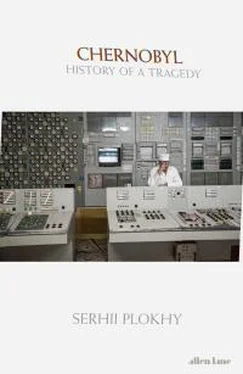

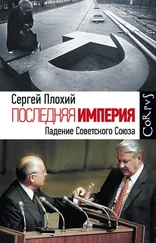



![Сергей Плохий - Чернобыль - История ядерной катастрофы [litres]](/books/385171/sergej-plohij-chernobyl-istoriya-yadernoj-katastrof-thumb.webp)
![Сергей Плохий - Человек, стрелявший ядом [История одного шпиона времен холодной войны]](/books/405163/sergej-plohij-chelovek-strelyavshij-yadom-istoriya-od-thumb.webp)

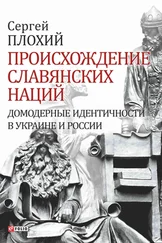
![Сергей Плохий - Потерянное царство. Поход за имперским идеалом и сотворение русской нации [c 1470 года до наших дней]](/books/433093/sergej-plohij-poteryannoe-carstvo-pohod-za-impersk-thumb.webp)
